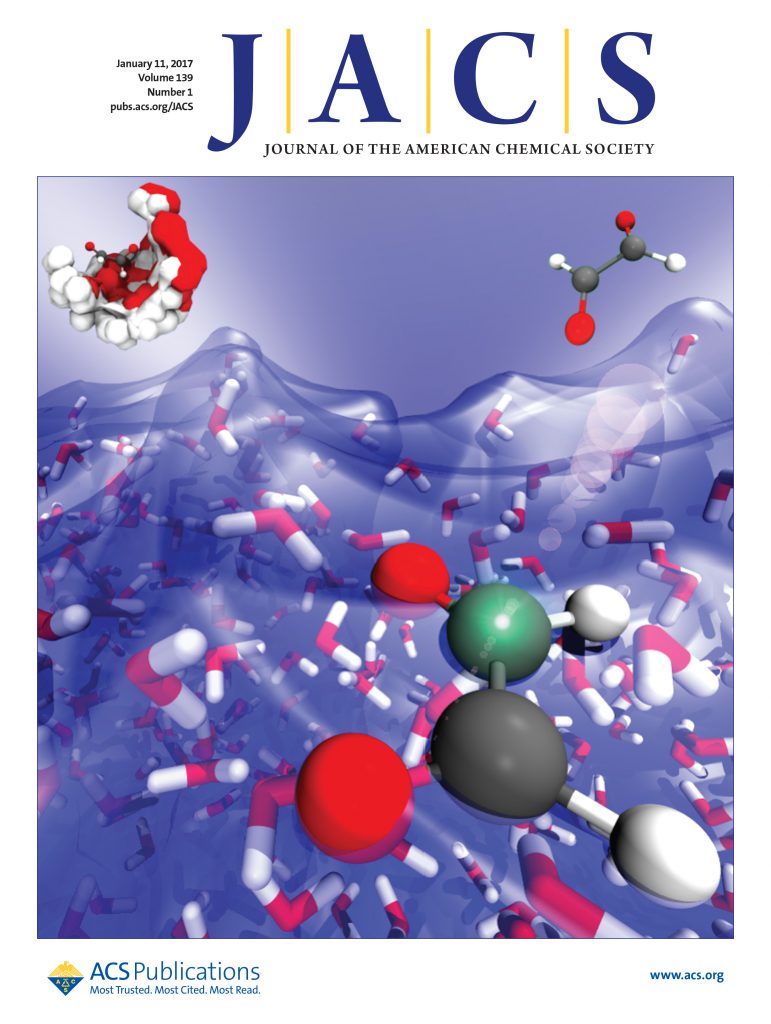Biomineralized Engineered Bacterial Outer Membrane Vesicles as cGAS-STING Nanoagonists Synergize with Lactate Metabolism Modulation to Potentiate Immunotherapy.
IF 15.6
1区 化学
Q1 CHEMISTRY, MULTIDISCIPLINARY
引用次数: 0
Abstract
The immunosuppressive tumor microenvironment (TME) significantly limits the efficacy of cancer immunotherapy. Activation of the cyclic guanosine monophosphate-adenosine monophosphate synthase (cGAS) stimulator of interferon genes (STING) pathway and depletion of the tumor metabolic byproduct lactate (LA) represent promising strategies to reverse the immunosuppressive TME and enhance antitumor therapeutic outcomes. Herein, biomineralized engineered bacterial outer membrane vesicles (OMVs@MnCaP-FA) are developed to synergistically activate the cGAS-STING pathway and modulate LA metabolism for antitumor immunotherapy. Upon internalization by 4T1 tumor cells, OMVs@MnCaP-FA undergo acid-responsive degradation, releasing Ca2+, Mn2+, and lactate oxidase (LOX)-expressing OMVs (OMVs-EcL). These components collectively promote mitochondrial DNA (mtDNA) generation, enhance cGAS-mediated mtDNA recognition and cyclic GMP-AMP (cGAMP) production, and potentiate the binding of cGAMP to STING, leading to robust activation of the cGAS-STING signaling pathway. More importantly, OMVs-EcL-mediated LA depletion reprograms the immunosuppressive TME into an immunoresponsive state, revitalizing antitumor immunity. In vivo studies demonstrate that the combined activation of the cGAS-STING pathway and regulation of LA metabolism effectively inhibit primary tumor growth and metastatic progression, highlighting the potential of this synergistic strategy for advancing antitumor immunotherapy.生物矿化工程细菌外膜囊泡作为cGAS-STING纳米激动剂与乳酸代谢调节协同增强免疫治疗。
免疫抑制肿瘤微环境(TME)显著限制了肿瘤免疫治疗的效果。激活环鸟苷单磷酸腺苷单磷酸合成酶(cGAS)干扰素基因刺激因子(STING)途径和消耗肿瘤代谢副产物乳酸(LA)是逆转免疫抑制TME和增强抗肿瘤治疗结果的有希望的策略。本文开发了生物矿化工程细菌外膜囊泡(OMVs@MnCaP-FA),以协同激活cGAS-STING途径并调节LA代谢,用于抗肿瘤免疫治疗。在被4T1肿瘤细胞内化后,OMVs@MnCaP-FA经历酸反应性降解,释放表达Ca2+, Mn2+和乳酸氧化酶(LOX)的omv (OMVs- ecl)。这些成分共同促进线粒体DNA (mtDNA)的产生,增强cgas介导的mtDNA识别和环GMP-AMP (cGAMP)的产生,并增强cGAMP与STING的结合,导致cGAS-STING信号通路的强大激活。更重要的是,omvs - ecl介导的LA耗损将免疫抑制性TME重编程为免疫应答状态,从而恢复抗肿瘤免疫。体内研究表明,cGAS-STING通路的联合激活和LA代谢的调节有效地抑制了原发肿瘤的生长和转移进展,突出了这种协同策略在推进抗肿瘤免疫治疗方面的潜力。
本文章由计算机程序翻译,如有差异,请以英文原文为准。
求助全文
约1分钟内获得全文
求助全文
来源期刊
CiteScore
24.40
自引率
6.00%
发文量
2398
审稿时长
1.6 months
期刊介绍:
The flagship journal of the American Chemical Society, known as the Journal of the American Chemical Society (JACS), has been a prestigious publication since its establishment in 1879. It holds a preeminent position in the field of chemistry and related interdisciplinary sciences. JACS is committed to disseminating cutting-edge research papers, covering a wide range of topics, and encompasses approximately 19,000 pages of Articles, Communications, and Perspectives annually. With a weekly publication frequency, JACS plays a vital role in advancing the field of chemistry by providing essential research.

 求助内容:
求助内容: 应助结果提醒方式:
应助结果提醒方式:


